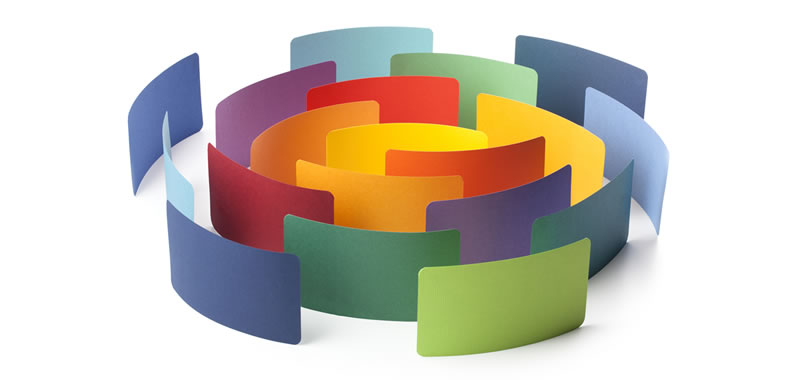
To a printer, a color is not just a color. The colors we perceive from printed material are the result of the interplay between the ink, the printing technique used, and the surface printed upon. To meet your color expectations, your label printer will have to examine each of these factors with precision – sometimes approaching that of a scientist.
So, if you’re ordering custom product labels for the first time and you get more questions than you expected, one of the reasons is because your custom label printer wants to meet (and even exceed) your color expectations.
Here are a few color-related questions your label printer will probably ask you:
How Precise Must the Color Be?
Some brand colors are so iconic that even a slight variation from the norm would be noticeable. Think about Coca-Cola’s red, John Deere’s green, or T-Mobile’s magenta. When brands rely on an ultra-specific shade of color to connect with customers, they can’t settle for “close enough” in the label printing process.
But, if the color you’re after is not part of your logo — say, the quirky image on your new line of hot sauce — you may choose affordability over specificity.
The question of specificity is especially important when discussing how to describe and reproduce colors. In our recent article, “Product Labels and the Science of Color,” we explain in depth why the color range displayed on your computer monitor is not exactly the same as that which can be produced by a printing press. We also describe the limitations of the traditional four-color CMYK printing process, and how the range can be extended — for additional costs and time.
Suffice it to say here, your label printer will want to know how much variation from your color request you can tolerate. If nothing short of an exact match is acceptable, your label printer will talk to you about your options, which might include four-color or seven-color process, use of “spot” colors (inks blended to produce only one specific color), or even the effects of using one printing process versus another.
What Material Will You Be Printing On?
The color and composition of a printing surface — what we printers call the “substrate” — affect how the color of ink is perceived. For example, paper can absorb ink, which may alter the intensity of a color.
The substrate can also add a color of its own. A pure white substrate offers a neutral backdrop. Common Kraft paper, by contrast, will offer a dark brown background that visibly changes the appearance of the printed image and, therefore, must be compensated for.
When your product packaging includes multiple substrates — for example, a header card made of paperboard and a plastic film label — you might be surprised to learn that different printing processes and inks may be required to achieve color consistency between them. Your label printer will ask you questions and may even provide printed samples to help you get the look you want.
What’s Your Budget and Timetable?
A trustworthy label printer will be candid with you about the time and cost it will take to meet your color expectations. They may inform you that, for example, digital printing will cost you less and be more efficient. But if you really have your heart set on a particular shade of blue, flexography may be worth the investment, as that might be the only way to achieve that specific shade.
It’s always best to leave yourself plenty of time for a comprehensive discussion with your label printer about your color expectations and the printing options and technology they offer. The sooner you get in touch with your label printer, the more you’ll benefit from their expertise.
Want to learn about Dana, and how she found the perfect labels for her electrolyte water bottles? Read her story.

